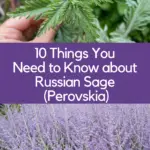
I like big boastful plants. A quick perusal of my article portfolio on this website will show that whenever I write a single-plant article, it tends to be centered around plants that take center stage.
Mesmerizing hydrangeas, romantic roses, cotton candy peonies. But I want to switch it up a bit and talk about an underrated accent plant for a change: Russian sage.
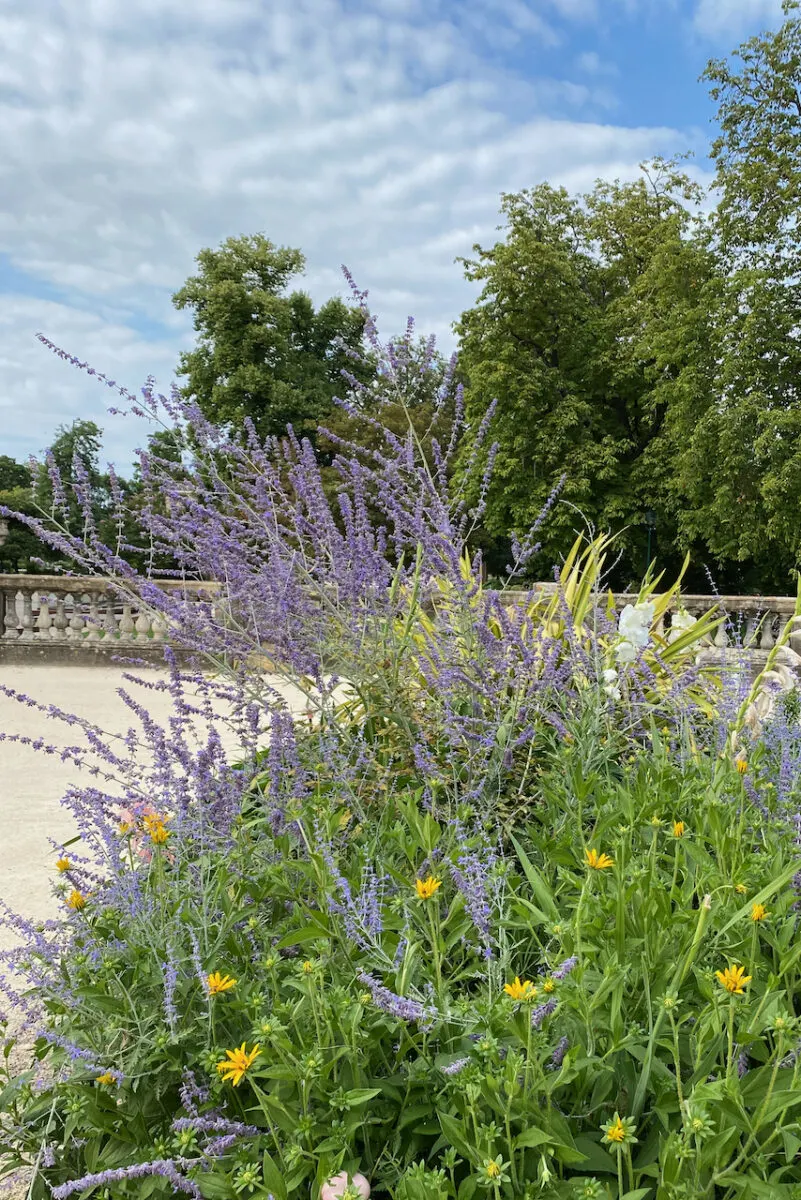
I bet you’ve probably come across this perennial in gardens or flower arrangements without even noticing it. Unless you really know what it looks like, you could easily confuse it with sage or lavender. The beauty of the Russian sage is that it enhances and complements all the other perennials it pairs with without ever taking over.
Here are the most important things I think you should know about planting and growing Russian sage.
1. Russian sage is not a real sage.
Russian sage (Perovskia atriplicifolia, more recently known as Salvia yangii) is not real sage (Salvia officinalis). I wanted to make this important distinction early on because the leaves of the Russian sage are generally not edible, even though they smell very fragrant.
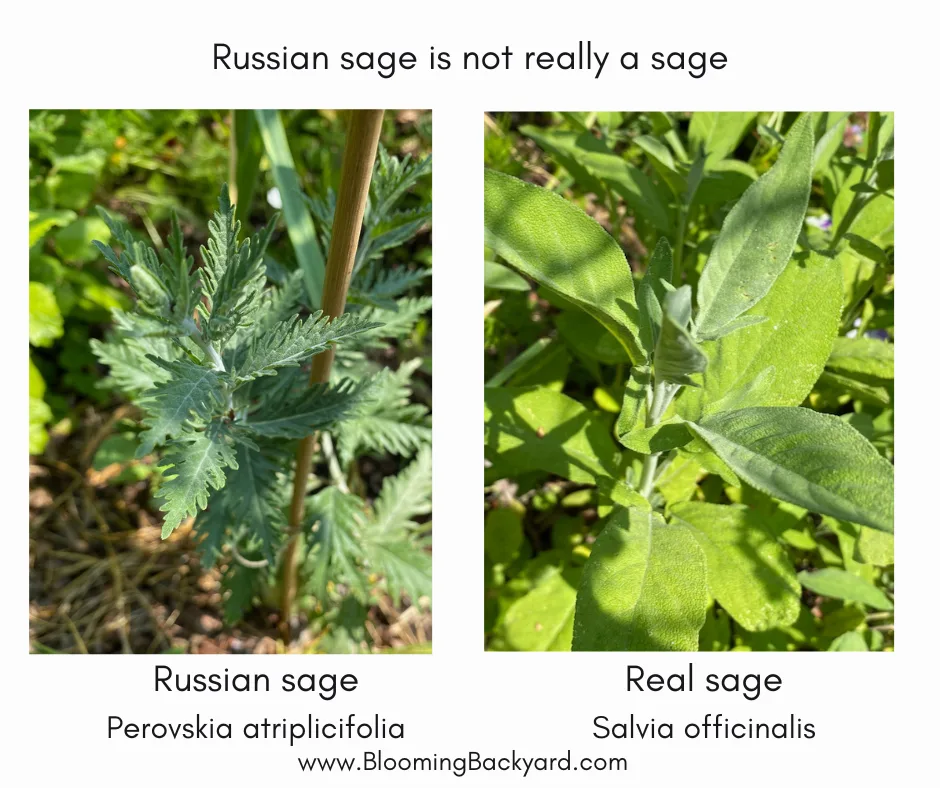
It just so happens that it’s not native to Russia either. This sturdy perennial is native to Central and South Asia, but it was named by a Russian botanist in honor of a Russian state official. So let’s agree that calling it perovskia will eliminate some of this confusion.
2. You can buy Russian sage as bare roots or as a starter plant.
I’m proud to say that I successfully started true sage from seed. But I would not endeavor to do this with Russian sage. That’s because I might need to wait up to four months (months!) for germination, according to this horticultural guide from the University of Wisconsin at Madison.
When I decided to bring a few perovskia plants into my garden, my search for larger, more mature plants came up with some pretty pricey results. That is, when I got any results at all. Because apparently even the large garden center in my area (part of a chain) doesn’t stock Russian sage. So I decided to order two smaller starter plants online.
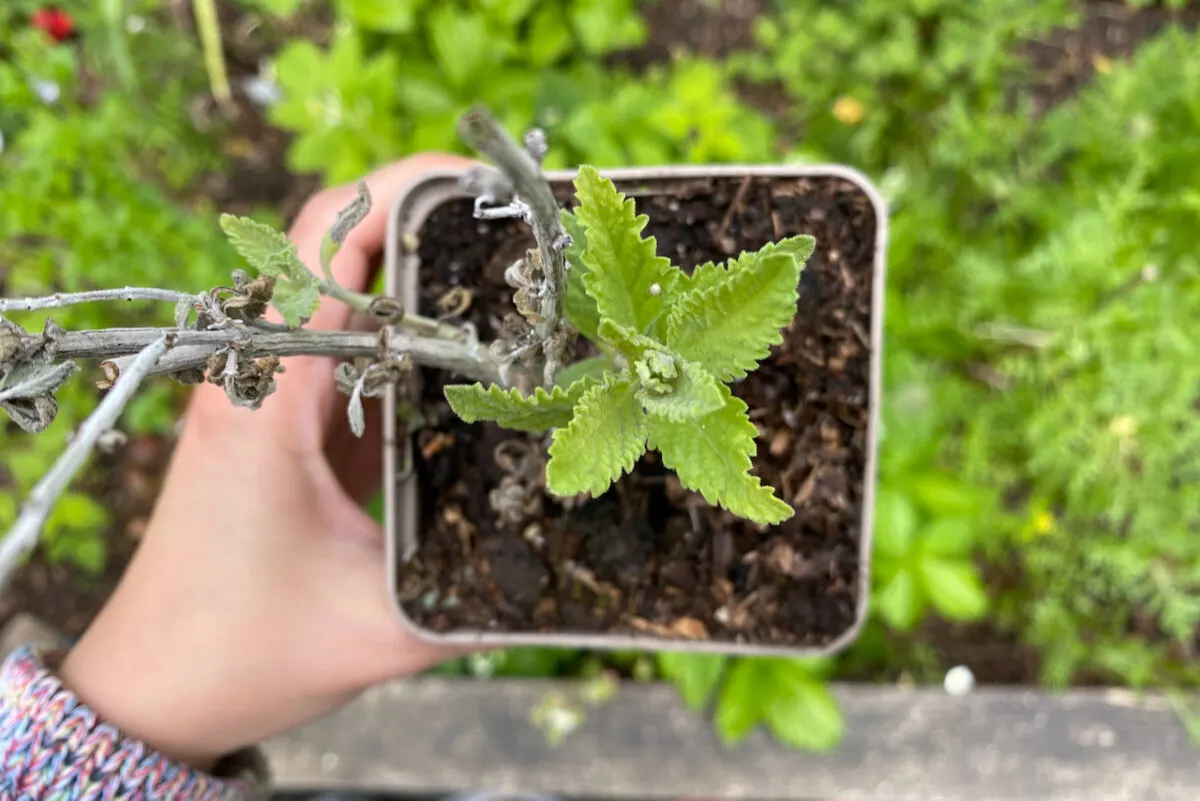
I think part of the problem of sourcing it is the fact that I was trying to get some in the spring. Had I been patient enough to wait for fall planting, I would have been able to buy and plant perovskia as a bare root plant.
I wrote an entire article on the benefits of planting bare root starters. In a nutshell, it’s an environmentally friendly and affordable option, in addition to being plant-friendly. Planting this way allows plants enough time to get their roots established before they start putting out new growth in spring.
3. Russian sage is suitable for a wide range of garden conditions.
Now we’re getting to the good part and to all the benefits of planting Russian sage in your garden. The middle name of this perennial might as well be ‘tolerant’ since it’s both drought tolerant and critter tolerant. But there’s one trick to keep in mind. Its tolerance will kick in only if you give it the attention it needs to get established.
This long bloomer will show off from July until October if you plant it in full sun. Even before it starts blooming, the silvery-green pattern of the foliage adds plenty of interest to any garden. And I do mean any garden because Russian sage is suitable for gardens in USDA zones 3 to 9.
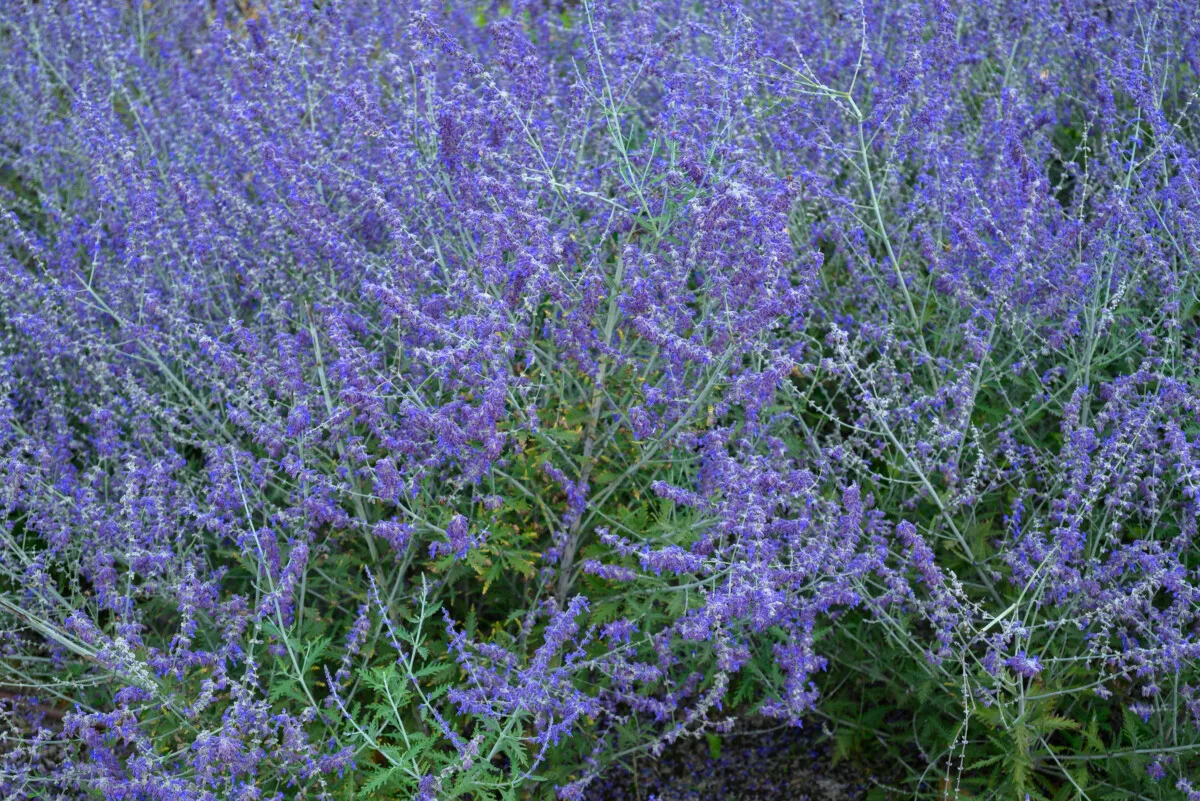
Russian sage prefers a well-draining spot in your garden and it doesn’t like having soggy feet. If you’re planting a starter plant, like I am, it’s really important that you water it regularly until it gets established. It will first put its energy into growing its deep-feeding taproot, so don’t be disappointed if it takes a couple of months to get comfortable in your garden. Once it does, you’ll be in for a real treat.
Perovskia can handle alkaline conditions, salt-rich soil and drought, which makes it a suitable plant for a wide range of gardening micro-climates, from coastal to desert.
4. Russian sage belongs in pollinator gardens.
Remember those long-lasting blooms. Yeah, they’re a feast for bees, butterflies and hummingbirds. The individual blossoms on each flower spike are quite petite, but it’s their sheer mass and their strong fragrance that’s the main attraction to insects.
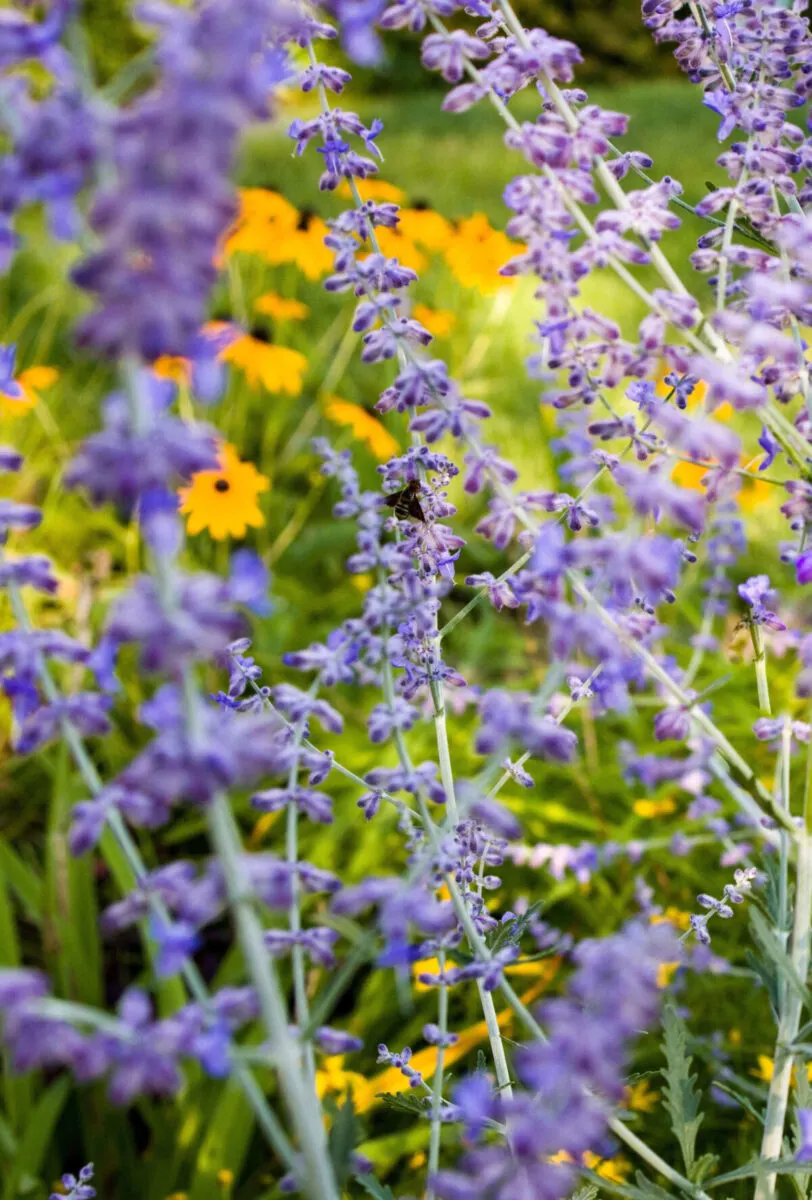
5. Russian sage is critter-resistant.
Since we’re talking about attracting wildlife, here’s the good news. Russian sage is not a favorite with deer, squirrels, rabbits or other such hungry creatures. The strong fragrance and flavor of the perovskia foliage means that it won’t be bothered much by the neighborhood critters.
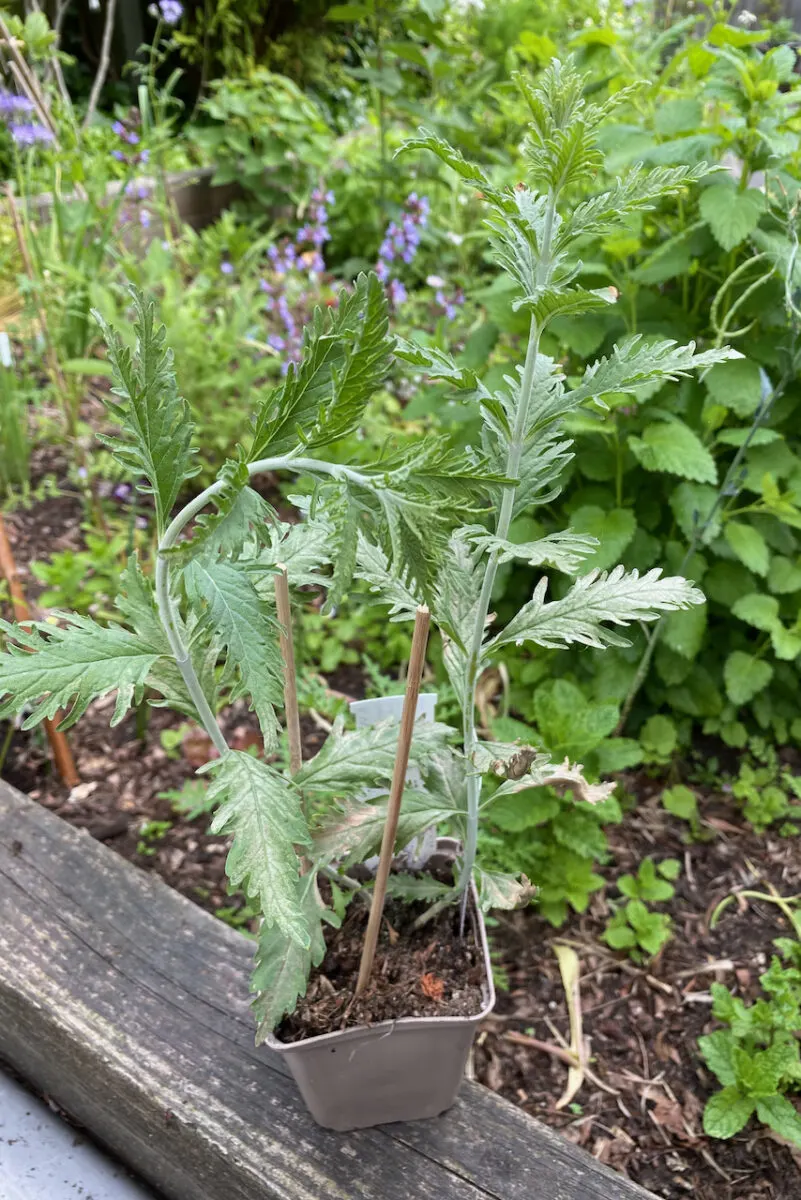
If you plant it in masses, you could even use it to repel unwanted snackers away from your more appetizing plants.
6. You can propagate Russian sage from softwood cuttings.
I’ve already mentioned that starting perovskia from seed could turn into an exercise in patience and frustration. In addition to this, due to its woody stems – similar to those of lavender – Russian sage is not a good candidate for root division.
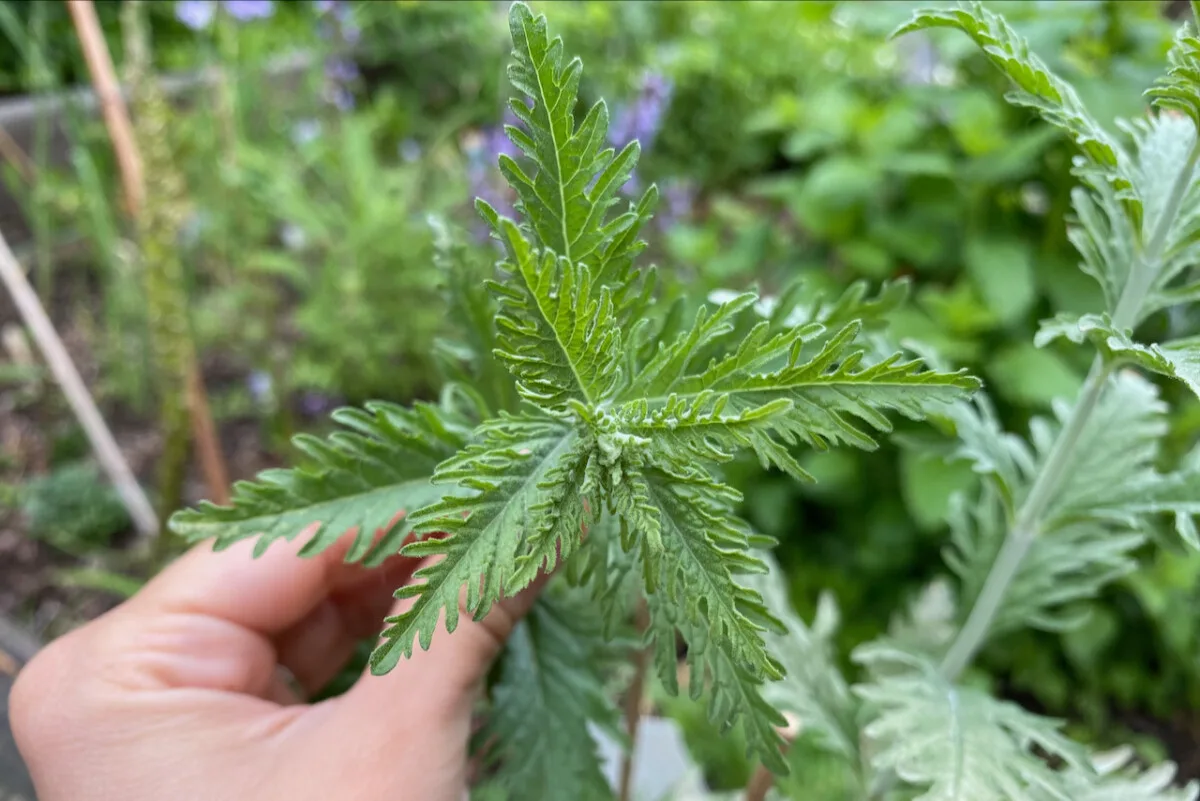
But you won’t have to keep rebuying it either. Once you have Russian sage growing in your garden, you can propagate it by taking softwood cuttings in late spring and early summer.
I wrote an easy guide on how to take softwood cuttings, including all the aftercare you need to do to have them all root successfully.
7. Russian sage is perfect in both living and cut arrangements.
An accent plant is a plant that helps bring out the best in all its neighbors. Kind of like a Mister Rogers of plants, if you will. That’s Russian sage for you. You can plant it in the back of the border to act as a canvas for all the perennials that you’ll “paint” with. If you go for smaller varieties (more on that later), you can use it in the front of the border or as a filler between larger plants.
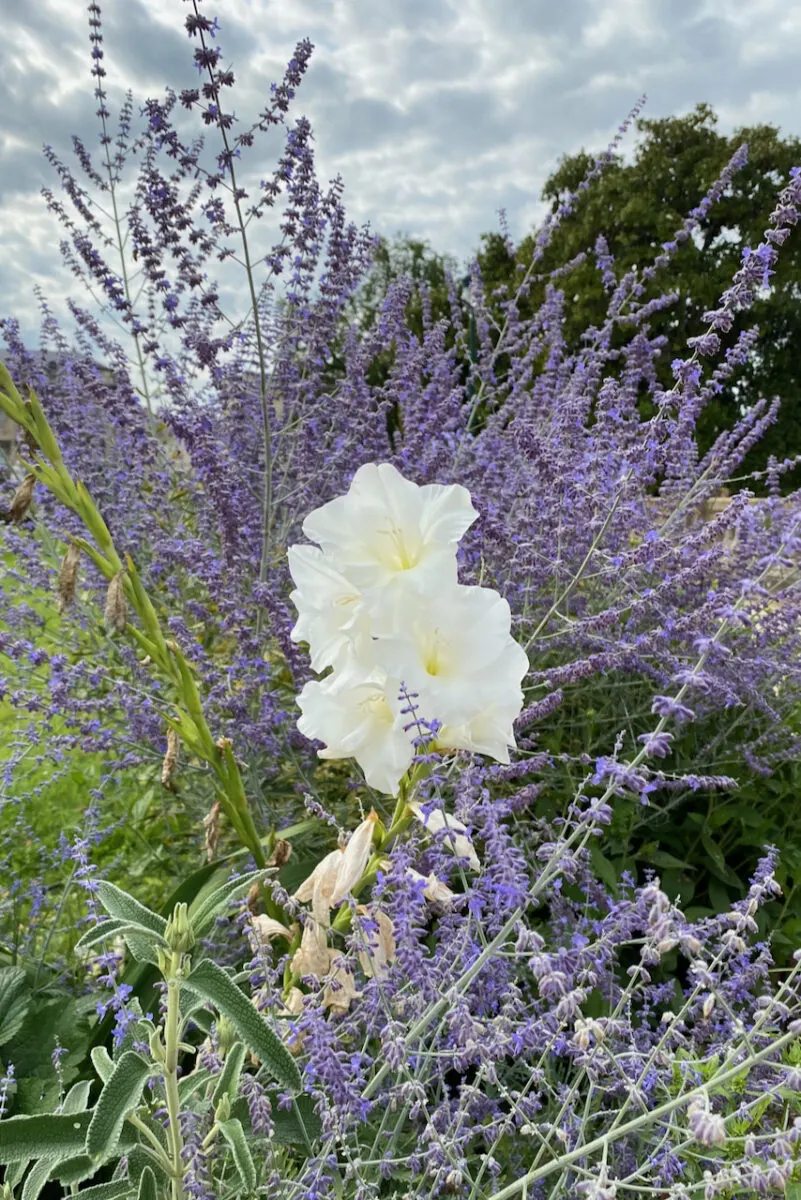
You can also plant perovskia in plant islands, for example to visually break up a large lawn.
Due to its muted shades of blue, Russian sage contrasts well with brighter colored plants such as Black-eyed Susan, echinacea or roses. It can also join tall gladioli and Japanese anemone in the back of the border.
Perovskia will have the same fullness effect in bouquets and tabletop arrangements. It’s a long-lasting cut flower, but once it’s past its prime, you can turn it into a beautiful dry flower.
8. You don’t need to fertilize Russian sage.
As more proof of how low-maintenance this perennial is, here’s another piece of good news. Russian sage doesn’t need any fertilizer. In fact, overfertilization can damage the root system just as bad as overwatering will.
However, a layer of fresh compost every spring will help keep the plant healthy for years. As will a layer of mulch in the fall.
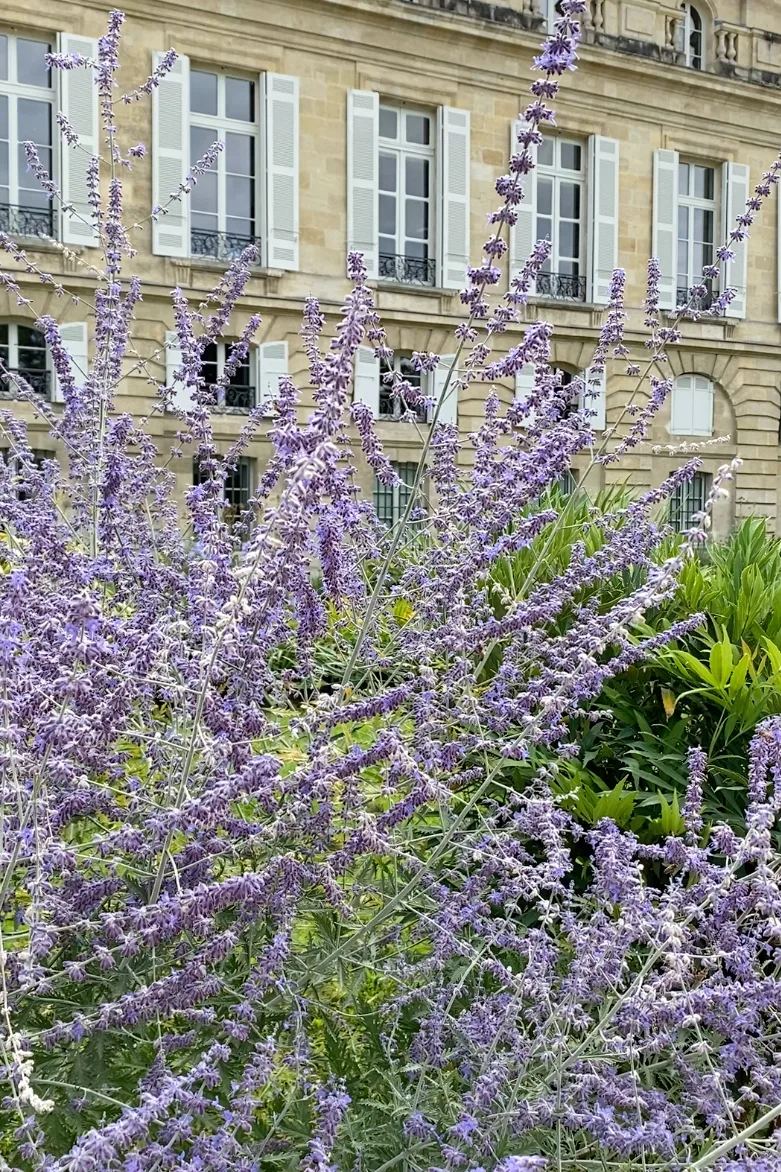
If you’re growing smaller cultivars of Russian sage in containers, the best thing you can do for them is change their potting soil every year. If that’s too much trouble, removing the top layer of soil and adding fresh compost might be enough to help your perovskia bloom profusely.
And speaking of blooming, if your Russian sage doesn’t seem as inclined to reach its full flowering potential, fertilizer is not the answer. Chances are that this perennial isn’t getting enough sun. Wait until late fall, then transplant your Russian sage to a sunnier location. You can do that up to a month before your first frost for the season. Whatever you do, avoid transplanting your perovskia in the middle of the summer.
9. Russian sage is one of those perennials that you only prune in spring.
Russian sage is a deciduous perennial. This means it will lose most of its silvery green foliage as temperatures drop in the fall. But it will still retain its appeal due to the silver stems and elegant seedheads. This makes it the perfect perennial to adorn your winter garden. Leaving the dry stems on the plant also has the extra advantage of acting as insulation and mulch for the crown of the plant.
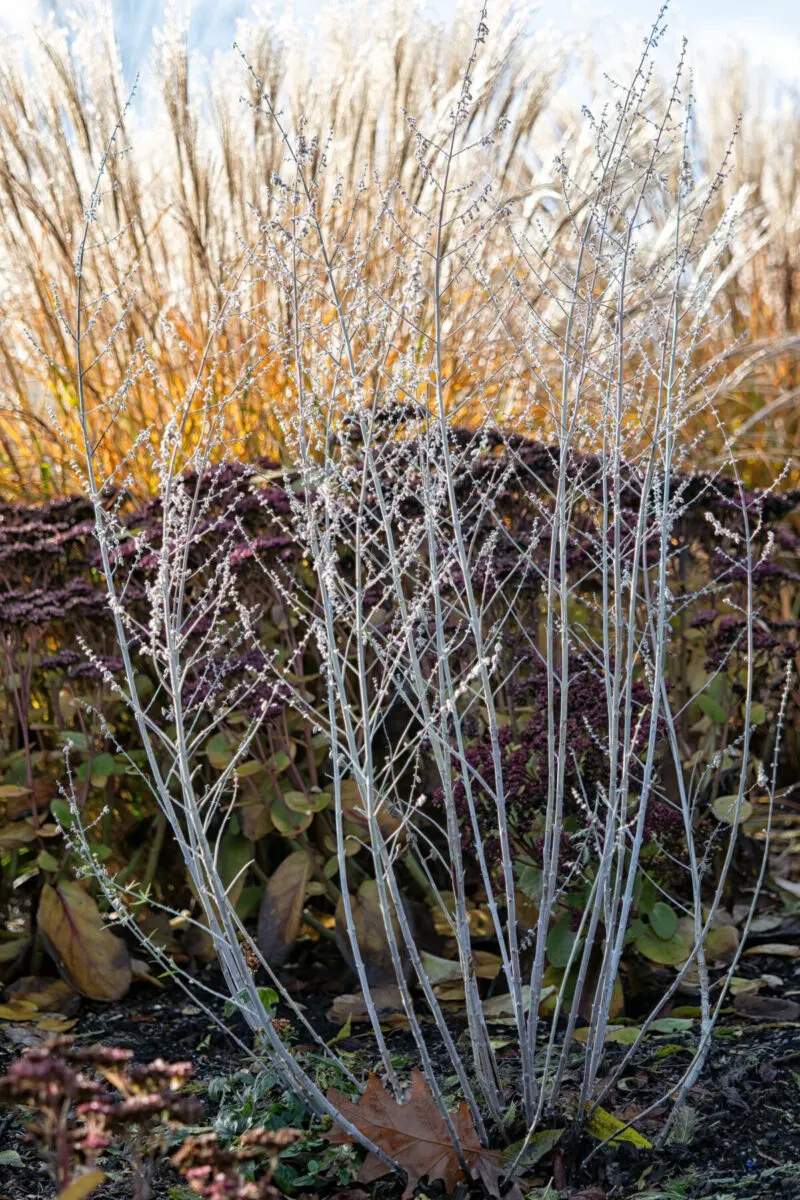
Once spring rolls around, it’s time to make room for new growth. That’s when you prune the dry matter all the way down to about four inches off the ground. The harder your prune, the more profusely it will flower. But if you see new buds coming up, protect them by trimming the dead material right above them.
10. There’s a Russian sage cultivar for every type of garden.
Unlike other colorful perennials, perovskia cultivars will only come in shades of blue or lavender. But there are quite a few varieties to choose from. And if you’re not a big fan of tall plants, rest assured there are smaller Russian sage cultivars available.
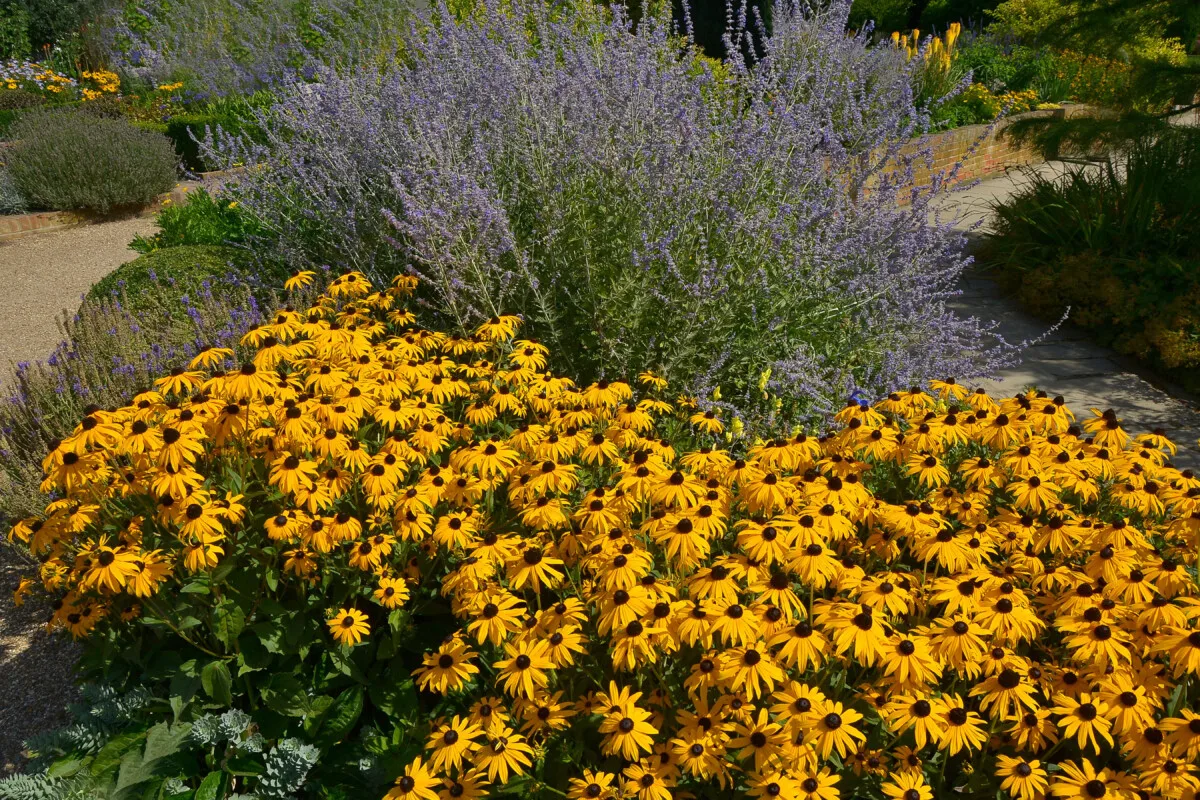
‘Blue Spire’ is an award-winning (Royal Horticultural Society’s Award of Garden Merit) popular cultivar that can reach up to five feet tall (about 1.5 meters) in full sun.
‘Little Spire’ is the much shorter version, reaching only 24 inches (60 cm) tall.
‘Denim ’n Lace’ tops up at 32 inches (81 cm) tall with a more compact look due to the spacing of the blooms.
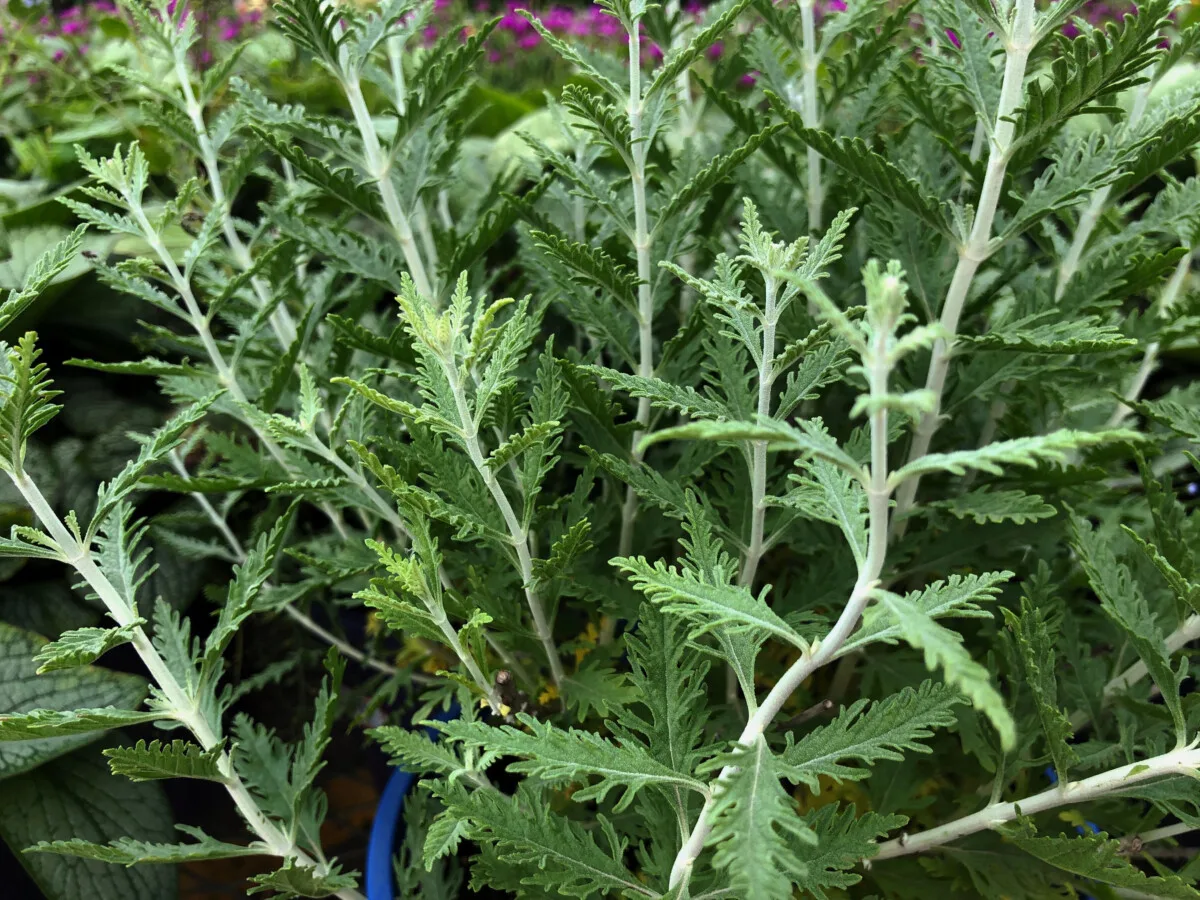
‘Peek-a-Blue’ is an exceptionally long-bloomer with a compact growing habit. It can grow to around 23-29 inches (60-75 cm)
‘Blue Steel’ has pale blue flowers and a misty, romantic look.
‘Rocketman’ is a mid-sized Russian sage cultivar with strong, upright stems and purple blooms.
‘Bluesette’ is a new cultivar that stays smaller (about 24 inches tall) and blooms earlier than your typical Russian sage. Its woody stems means that it will not flop, making it suitable for containers.
Now that you know all about Russian sage and how easy it is to grow, how would you incorporate it in your garden?

